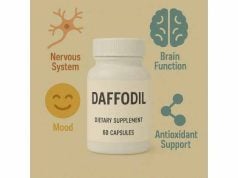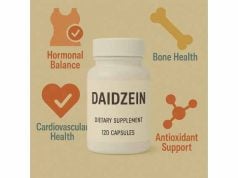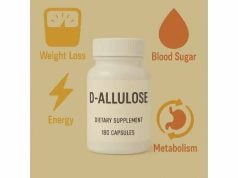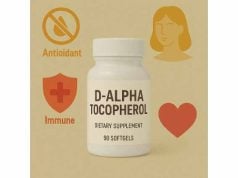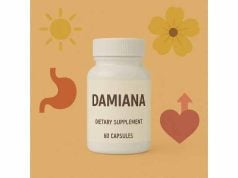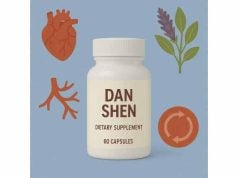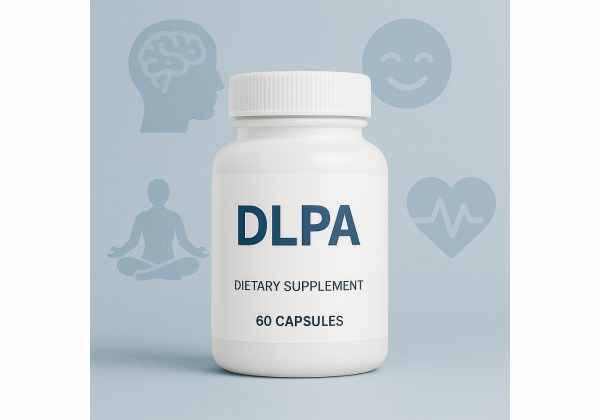
DLPA (DL-phenylalanine) is a 50:50 blend of two mirror-image forms of the essential amino acid phenylalanine. The L-form feeds into tyrosine and the catecholamines (dopamine and norepinephrine), which is why people associate it with mood, focus, and energy. The D-form, meanwhile, has been explored for its ability to slow the breakdown of our own endorphins and enkephalins—natural pain-modulating peptides. Together, DLPA is marketed for low mood, stress-related fatigue, and stubborn aches. The science is mixed: there are plausible mechanisms and some older clinical reports, but modern, high-quality trials are limited. Still, many adults try DLPA because it is easy to dose, relatively inexpensive, and—at modest amounts—generally well tolerated. This guide explains what DLPA is and is not, what to expect, how to use it carefully, and who should avoid it.
Essential Insights for DLPA Users
- DPA may support pain modulation via enkephalinase inhibition, while L-phenylalanine supports catecholamine synthesis for mood and alertness.
- Evidence for clear benefits is inconsistent; use time-limited trials and track specific outcomes.
- Studied amounts range from 150–200 mg/day (older mood trials) to about 1,000 mg/day of D-phenylalanine for pain; many products supply 500 mg per capsule.
- Avoid if you have phenylketonuria (PKU); seek medical guidance if pregnant, breastfeeding, on MAOIs, or taking levodopa for Parkinson’s disease.
Table of Contents
- What is DLPA and how it works
- Does DLPA improve mood or pain?
- How to take DLPA: dosage and timing
- Interactions that matter: levodopa, MAOIs, and more
- Side effects and who should avoid DLPA
- What the research says today
What is DLPA and how it works
DLPA is a racemic mixture: half L-phenylalanine (LPA) and half D-phenylalanine (DPA). LPA is an essential amino acid—we must get it from food. In cells, LPA converts to tyrosine, which then builds dopamine and norepinephrine (catecholamines involved in motivation, attention, and stress response). This is the rationale behind using L-form phenylalanine or DLPA for low energy or blunted drive. Because amino acids compete for shared transporters, extra LPA can transiently raise tyrosine availability, which may—under certain conditions—nudge catecholamine synthesis upward. That does not guarantee a mood or focus benefit, but it explains the common use-case.
DPA behaves differently. It does not feed into neurotransmitter synthesis in the same way. Instead, DPA has been studied as a putative enkephalinase inhibitor—a compound that may slow the enzymes that break down enkephalins (one family of endogenous opioids). If those peptides hang around a bit longer at synapses, the brain’s own pain-modulating circuits might work more effectively. Early mechanistic and clinical explorations of DPA and DLPA for pain leaned on this hypothesis. The data are mixed, with some open reports suggesting benefit and controlled trials often finding little or no effect versus placebo. Either way, the mechanism is distinct from common analgesics and makes DLPA attractive as an adjunct rather than a replacement.
It helps to think of DLPA as two tools in one bottle:
- LPA: upstream of catecholamines → may influence drive, alertness, and stress tolerance (especially under mentally demanding conditions).
- DPA: theoretical endorphin/enkephalin support → explored for persistent pain, tender points, and mood-pain overlap.
In practice, response varies for three main reasons. First, baseline diet matters: if you already eat adequate protein, adding more phenylalanine may do little. Second, coexisting medications (e.g., MAO inhibitors or levodopa) can change the risk-benefit picture. Third, many products differ in quality, capsule count, and whether they are DL-, D-, or L-phenylalanine—labels are not always clear. Read the Supplement Facts panel to confirm the form and amount per serving, and match it to your goal (mood focus vs. pain support).
Does DLPA improve mood or pain?
Mood and motivation. Because L-phenylalanine feeds into dopamine and norepinephrine pathways, DLPA is commonly marketed for mood, mental energy, and “drive.” The clinical literature here is older and limited. Small studies in the 1970s explored DL-phenylalanine in depression at 150–200 mg/day, sometimes comparing it to standard antidepressants. These trials were short, methodologically modest by today’s standards, and not consistently replicated. They suggest a possible signal for mood improvement in a subset of patients but do not establish DLPA as an antidepressant. What we can say more confidently is mechanistic: the L-form contributes to tyrosine and catecholamine synthesis, which are relevant to mood and attention. That provides a biologic rationale for trialing DLPA in low-energy, stress-related slump—provided safety boxes are checked and expectations are calibrated.
Pain and tenderness. The D-form generated interest because of its proposed enkephalinase-inhibiting effect, potentially amplifying natural pain-inhibitory systems. However, when D-phenylalanine was put to the test in randomized designs for chronic pain, the results often failed to beat placebo. A well-cited double-blind, crossover study in chronic pain patients using D-phenylalanine 250 mg four times daily found no significant analgesic advantage versus placebo across outcomes. Contemporary overviews of nutrition in pain management generally categorize D-phenylalanine as promising mechanistically but unproven clinically, emphasizing heterogeneity across pain phenotypes and the importance of multi-modal care.
What expectation is realistic? If DLPA helps, benefits are usually modest: slightly better drive, mental stamina, or stress tolerance (via LPA) and possibly a small reduction in pain perception (via DPA) in select individuals. Effects—if they occur—tend to show up within 1–2 weeks for mood/energy and within 2–4 weeks for pain. Many people feel nothing, which is also an informative outcome.
Who may be more likely to benefit? Practical clues include: low total protein intake; high cognitive load with “flat” motivation; pain with stress sensitivity and poor sleep; or a desire to test a non-sedating adjunct that works through different biology than NSAIDs or acetaminophen. None of these are guarantees—just reasonable starting hypotheses to guide a time-limited, well-monitored trial.
What won’t DLPA do? It will not replace antidepressants in moderate-to-severe depression, it will not treat acute injury pain, and it will not outperform evidence-based physical therapy, sleep optimization, or cognitive-behavioral strategies. Consider DLPA as a supportive experiment layered onto core habits and treatments—not a primary therapy.
How to take DLPA: dosage and timing
Forms and labels. You will find DL-phenylalanine (DLPA), L-phenylalanine, and less commonly D-phenylalanine. For mood/drive goals, DLPA or L-phenylalanine are typically chosen; for analgesic exploration, some prefer D-phenylalanine alone. Many capsules contain 500 mg; always check the “per serving” amount and whether a “serving” is one or two capsules.
Studied amounts (examples from clinical literature and tolerance work):
- Mood (older trials): 150–200 mg/day of DL-phenylalanine for several weeks. These were small, older studies and should not be over-interpreted; they simply anchor a lower bound for trialing.
- Pain (D-phenylalanine): 1,000 mg/day (e.g., 250 mg four times daily) in chronic pain studies; results were not superior to placebo on average, but this dose frames what has been tested.
- General safety/tolerability: in healthy adults, phenylalanine up to 12 g/day for 4 weeks was tolerated without treatment-related adverse events in a controlled tolerance program; this does not mean such high intakes are useful—only that they did not trigger safety signals under study conditions.
Practical starting points (for otherwise healthy adults, after reviewing the “Who should avoid” section below):
- First-time trial for mood/drive: Start with 250–500 mg DLPA once daily with breakfast for 3–5 days. If tolerated but no effect, increase to 500 mg twice daily (morning and early afternoon). Avoid after 3 p.m. if you are sensitive to stimulation.
- Pain-focused trial (adjunct): If you specifically wish to evaluate the D-form mechanism, use D-phenylalanine at 250–500 mg 2–4 times daily with meals for 2–4 weeks, alongside your existing pain plan. Stop if no clear benefit.
- Do not escalate quickly. Most perceived effects—if any—appear within 1–2 weeks. If you feel wired, anxious, or notice heart-pounding, step down or stop.
Timing, meals, and stacking.
- Take with food if you experience heartburn or queasiness; some prefer on an empty stomach to reduce competition with other amino acids, but comfort and consistency matter more than theory.
- Caffeine and other stimulants can magnify “edgy” feelings; avoid new stacks when first testing DLPA.
- If you take levodopa (for Parkinson’s disease), or if you use MAOI antidepressants, read the interactions section before trying DLPA.
How to judge the trial. Use one measurable outcome (for example, “How many focused 25-minute work blocks can I complete?” or “How many stairs can I climb before pain makes me pause?”). Track baseline for a week, add DLPA, and reassess after 2–4 weeks. If there is no functional change, stop.
Interactions that matter: levodopa, MAOIs, and more
Levodopa (Parkinson’s disease). Phenylalanine is a large neutral amino acid (LNAA) that uses the same transport systems as levodopa in the gut and at the blood–brain barrier. High LNAA loads can compete with levodopa for absorption and brain entry, contributing to motor fluctuations or “dose failures” in some patients. Dietetic approaches such as protein-redistribution diets and timing strategies are commonly used to manage these interactions. If you take levodopa, do not add DLPA without discussing it with your neurology or dietetics team; even modest supplemental amounts may nudge transporter competition in the wrong direction. If a carefully supervised trial is approved, separate any phenylalanine-containing supplement from levodopa dosing and protein-rich meals, and monitor clinical response closely.
MAO inhibitors (MAOIs). MAOIs impair the breakdown of biogenic amines and have well-known food and drug interaction profiles. Because L-phenylalanine feeds into tyrosine → catecholamines and can indirectly influence tyramine handling and sympathetic tone, combining DLPA/L-phenylalanine with MAOIs is generally discouraged. The theoretical concern is a hypertensive surge or other adverse responses in susceptible individuals. If you are on an MAOI, do not use DLPA unless your prescriber explicitly agrees and sets a monitoring plan.
Levodopa-adjacent and other dopamine-active drugs. Beyond levodopa itself, high LNAA intake can influence the kinetics and effectiveness of dopaminergic therapies. If you take dopamine agonists, COMT inhibitors, or antipsychotics, review any supplement changes with your clinician.
Other considerations.
- Thyroid disease or melanoma history: Because catecholamine pathways intersect with metabolic and pigment biology, some clinicians prefer to avoid L-phenylalanine at higher doses in these settings; this is precautionary rather than based on strong intervention trials.
- Blood pressure: If you notice new or worsened palpitations or headaches, discontinue and discuss with your clinician—especially if you have hypertension.
- Protein-restricted medical diets: Anyone on specific amino acid restrictions (e.g., PKU medical foods, urea cycle disorders) should consult their metabolic team before any phenylalanine-containing supplement.
Bottom line: For most healthy adults not on interacting drugs, DLPA at conservative doses is unlikely to cause serious interactions. If you take levodopa or an MAOI, treat DLPA as contraindicated unless a specialist advises otherwise.
Side effects and who should avoid DLPA
Common, usually mild.
- GI upset (nausea, heartburn) or a sour aftertaste, especially on an empty stomach.
- Restlessness or jitteriness at higher doses or when combined with stimulants; start low and avoid late-day dosing.
- Headache in sensitive users; often resolves with dose reduction or discontinuation.
Less common.
- Sleep disruption when taken late in the day; keep dosing to early hours.
- Mood lability or anxiety in people prone to overstimulation; if this occurs, reduce or stop.
- Skin reactions are rare; stop and seek care if you notice hives, swelling, or breathing difficulty.
Who should avoid DLPA (or use only with clinician guidance).
- Phenylketonuria (PKU) or maternal PKU: Any added phenylalanine can be harmful; phenylalanine intake is tightly managed in these conditions.
- Pregnancy and breastfeeding: Phenylalanine requirements and handling change; avoid self-supplementation unless your obstetric or metabolic team approves.
- On MAOIs: Risk of dangerous hypertensive crisis or other adverse responses.
- On levodopa: Added LNAAs can interfere with medication effectiveness; use only under specialist supervision.
- Uncontrolled hypertension, significant cardiovascular disease, or active anxiety disorders: Stimulatory responses are possible; avoid unless cleared.
Dental and nutritional context. DLPA capsules bypass the acidity concerns seen with sour powders, but the bigger picture is total protein balance. If you already eat ample protein, extra phenylalanine may not add value. Conversely, if you are protein-insufficient, correcting diet can accomplish the same goal without supplements.
Stopping rules. End any trial if you have no measurable functional improvement after 2–4 weeks, if blood pressure rises, if sleep suffers, or if anxiety increases.
What the research says today
Safety and tolerability. A controlled 4-week tolerance program in healthy adults tested graded daily intakes of phenylalanine (3–12 g/day) and found no treatment-related adverse events and only minor, non-toxic changes in selected lab markers. This aligns with the idea that modest supplemental amounts are well tolerated in healthy people over the short term. Remember: tolerance ≠ usefulness—safety testing is not the same as efficacy testing.
Pain modulation. The enkephalinase-inhibition story led to several clinical probes of D-phenylalanine for chronic pain. The most cited randomized, double-blind, crossover trial in diverse chronic pain patients used D-phenylalanine 250 mg four times daily (1,000 mg/day) and found no significant analgesic effect over placebo. Broader reviews of nutraceuticals in pain management echo that evidence is inconsistent and low-certainty, advising that D-phenylalanine should not replace standard treatments.
Mood and catecholamines. Older trials of DL-phenylalanine 150–200 mg/day hinted at antidepressant effects, but methods were limited and results were not robustly replicated. Modern neurochemistry work confirms that phenylalanine is upstream of catecholamine synthesis, but whether supplemental DLPA produces clinically meaningful mood changes beyond a good diet remains uncertain. It is reasonable to trial DLPA for specific, measurable complaints (e.g., morning drive, mental stamina) with time-boxed expectations.
Transport competition and levodopa. Multiple contemporary reviews and mechanistic papers reaffirm that large neutral amino acids, including phenylalanine, compete with levodopa at intestinal and blood–brain barrier transporters. Dietetic strategies—protein redistribution, meal timing, and careful separation of supplements from medication—can improve levodopa response. For patients on levodopa, adding DLPA is not routine and should be done only under clinical supervision.
PKU and life stages. Because phenylalanine handling is central to PKU, elevated phenylalanine is neurotoxic in that condition and carefully controlled from infancy through adulthood; maternal hyperphenylalaninemia during pregnancy can harm the fetus. This is why DLPA is contraindicated in PKU and why self-supplementation during pregnancy is not advised.
Bottom line. DLPA has plausible biology and acceptable short-term tolerability in healthy adults. Evidence for large, reliable improvements in mood or pain is limited. If you choose to experiment, do so conservatively, align the dose to studied ranges, and build strong stopping rules into your plan.
References
- Subchronic Tolerance Trials of Graded Oral Supplementation with Phenylalanine or Serine in Healthy Adults 2021 (Tolerance Trial).
- Analgesic effectiveness of D-phenylalanine in chronic pain patients 1986 (RCT).
- Dietary Approaches to Improve Efficacy and Control Side Effects of Levodopa Therapy in Parkinson’s Disease 2021 (Review).
- Biochemistry, Essential Amino Acids 2024 (Overview).
- Phenylketonuria 2023 (Clinical Overview).
Disclaimer
This article is educational and does not replace personalized medical advice. DLPA may interact with medications (notably MAOIs and levodopa) and is inappropriate for people with phenylketonuria. If you are pregnant, breastfeeding, have significant medical conditions, or take prescription drugs, consult a qualified clinician before using any phenylalanine-containing supplement. Stop any trial and seek care if you experience concerning symptoms.
If you found this helpful, please consider sharing it on Facebook, X (formerly Twitter), or your preferred platform, and follow us for future evidence-based guides. Your support helps us continue producing high-quality content.

